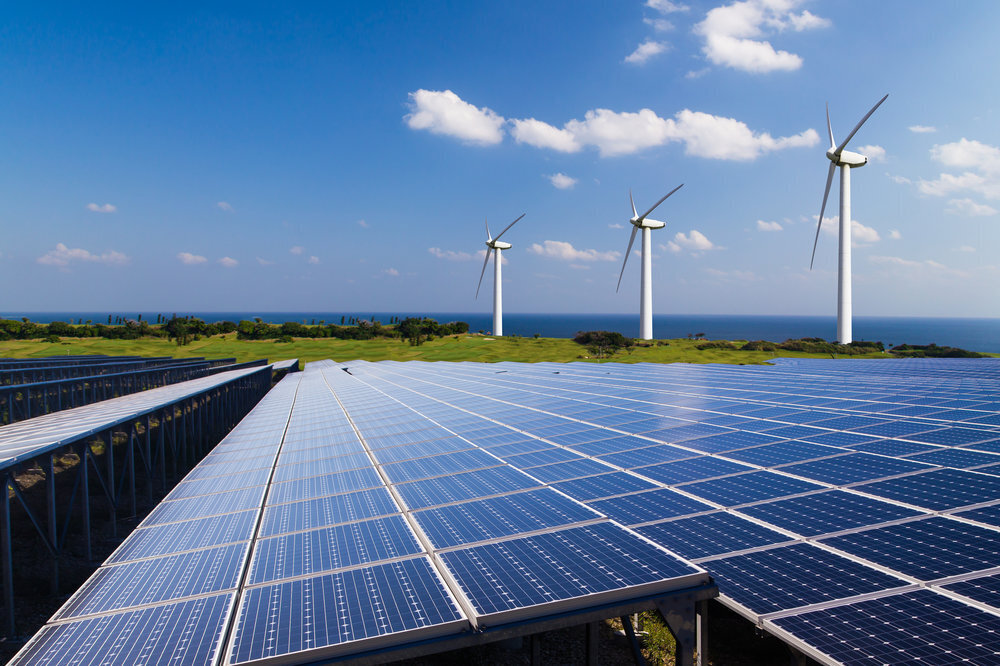
Renewable power generation capacity reaches 900 MW

Currently, 900 megawatts of electricity is generated from renewable power plants in the country, most of which are solar power plants,” Ardakanian said in an inauguration ceremony of a power plant in Mazandaran province, northern Iran.
“Relying on renewable energy and reducing dependence on fossil fuels for electricity generation has been one of the government's major goals and it is being pursued seriously,” the official stressed.
Iran’s renewable power generation capacity reached 840 MW in October 2019.
Speaking in the opening ceremony of Iran’s 4th Renewable Energy Conference in mid-October 2019, Homayoun Haeri, the deputy minister of energy for electricity affairs, announced that the country’s renewable electricity generation capacity is planned to rise to 1000 MW by the end of the current Iranian calendar year (March 19, 2020).
Renewables, including hydropower, account for just seven percent of the country’s total energy generation, versus natural gas’ 90 percent share.
Overall, in the next five years, Iran is aiming for a 5,000 MW increase in renewable capacity to meet growing domestic demand and expand its presence in the regional electricity market.
Currently over 100 large-scale renewable power plants are operating across Iran.
According to Iran’s Renewable Energy and Energy Efficiency Organization (known as SATBA), the number of small scale solar power plants across the country which are used by households or small industries is also increasing noticeably as Iranian households and small industries are embracing the new technology with open arms and investors also seem eager for more contribution in this area.


Trump weighs using $2 billion in CHIPS Act funding for critical minerals

Codelco cuts 2025 copper forecast after El Teniente mine collapse

Electra converts debt, launches $30M raise to jumpstart stalled cobalt refinery

Barrick’s Reko Diq in line for $410M ADB backing

Abcourt readies Sleeping Giant mill to pour first gold since 2014

Nevada army depot to serve as base for first US strategic minerals stockpile

SQM boosts lithium supply plans as prices flick higher

Viridis unveils 200Mt initial reserve for Brazil rare earth project

Tailings could meet much of US critical mineral demand – study

Kyrgyzstan kicks off underground gold mining at Kumtor

Kyrgyzstan kicks off underground gold mining at Kumtor

KoBold Metals granted lithium exploration rights in Congo

Freeport Indonesia to wrap up Gresik plant repairs by early September

Energy Fuels soars on Vulcan Elements partnership

Northern Dynasty sticks to proposal in battle to lift Pebble mine veto

Giustra-backed mining firm teams up with informal miners in Colombia

Critical Metals signs agreement to supply rare earth to US government-funded facility

China extends rare earth controls to imported material

Galan Lithium proceeds with $13M financing for Argentina project

Kyrgyzstan kicks off underground gold mining at Kumtor

Freeport Indonesia to wrap up Gresik plant repairs by early September

Energy Fuels soars on Vulcan Elements partnership

Northern Dynasty sticks to proposal in battle to lift Pebble mine veto

Giustra-backed mining firm teams up with informal miners in Colombia

Critical Metals signs agreement to supply rare earth to US government-funded facility

China extends rare earth controls to imported material

Galan Lithium proceeds with $13M financing for Argentina project

Silver price touches $39 as market weighs rate cut outlook

















